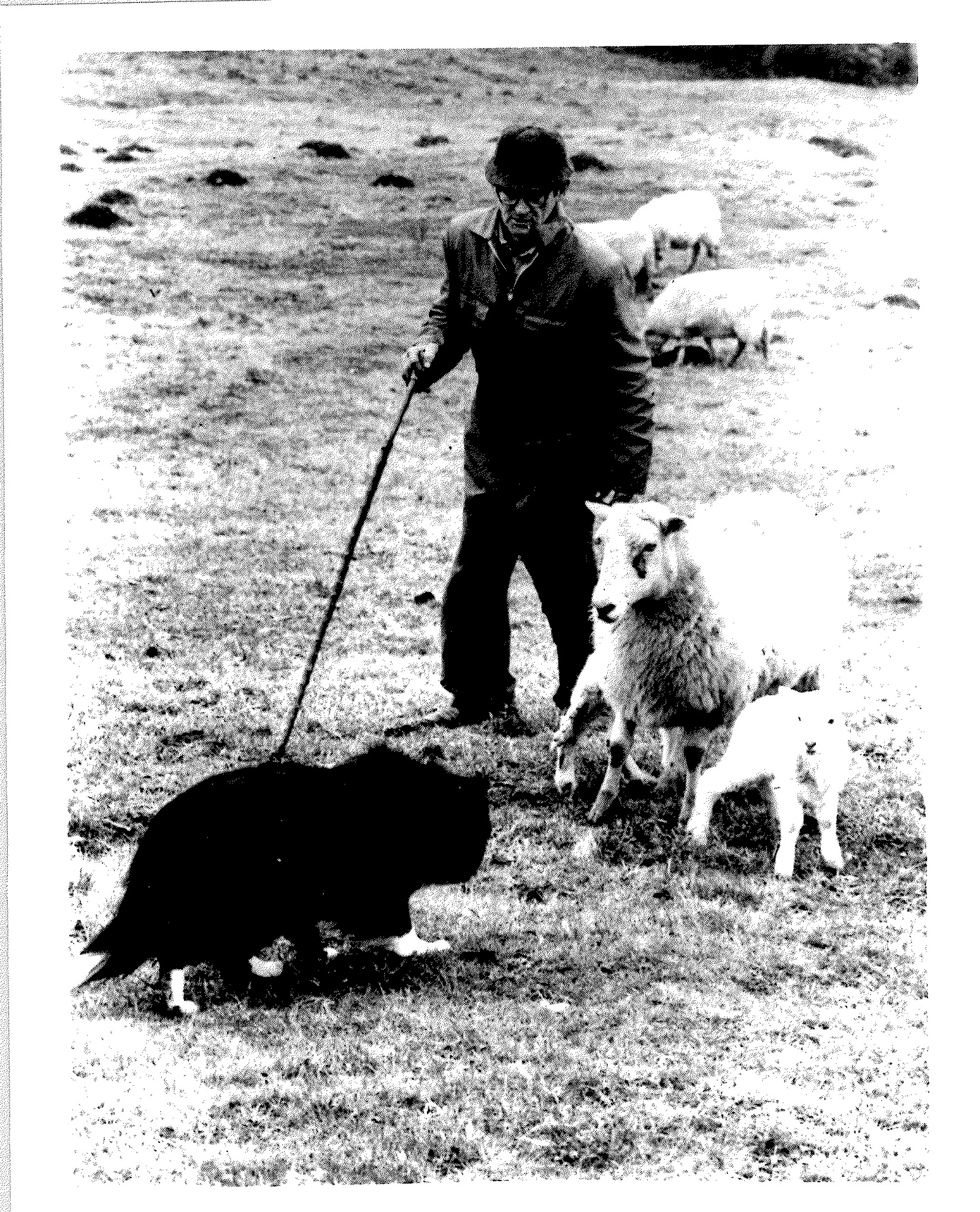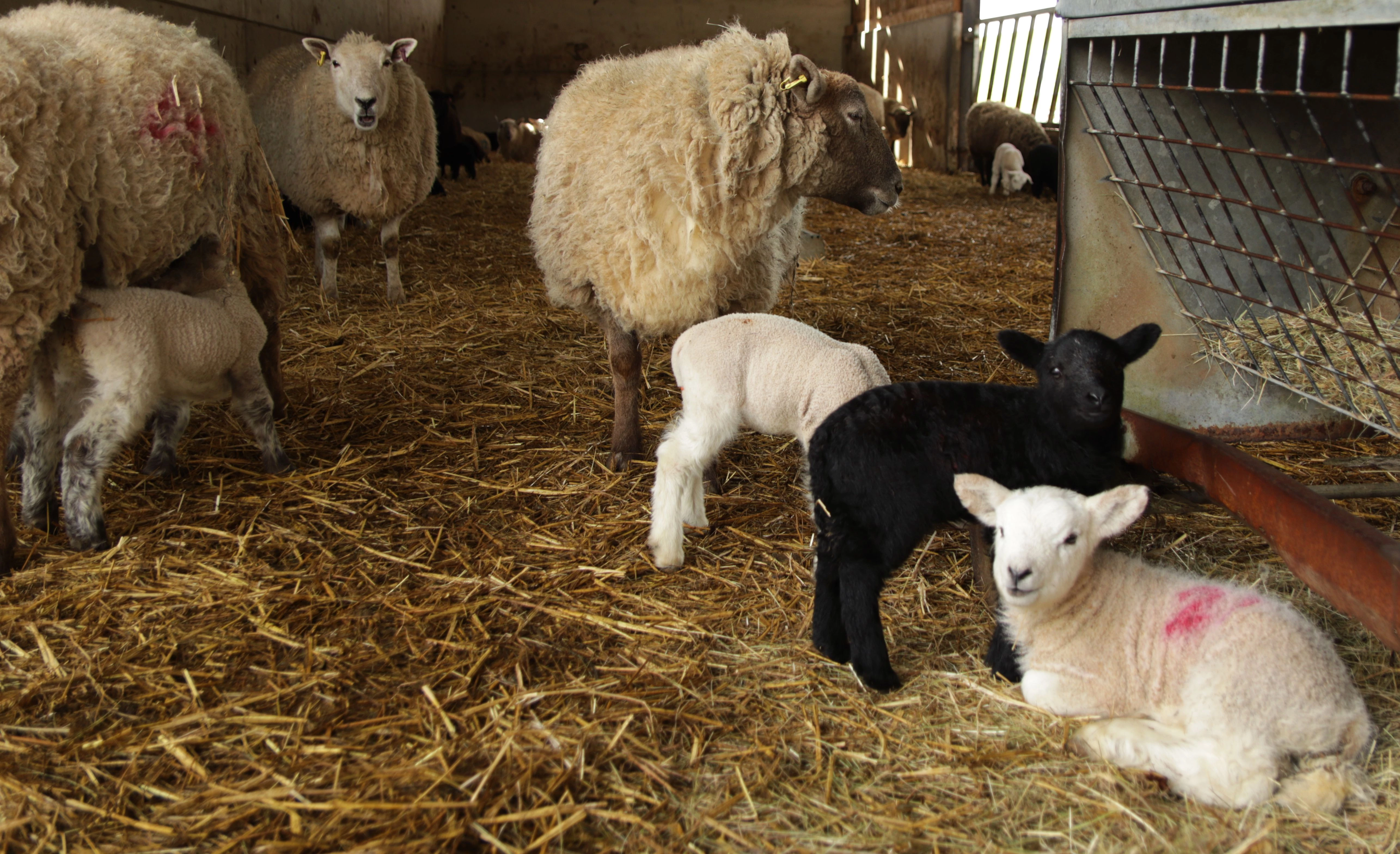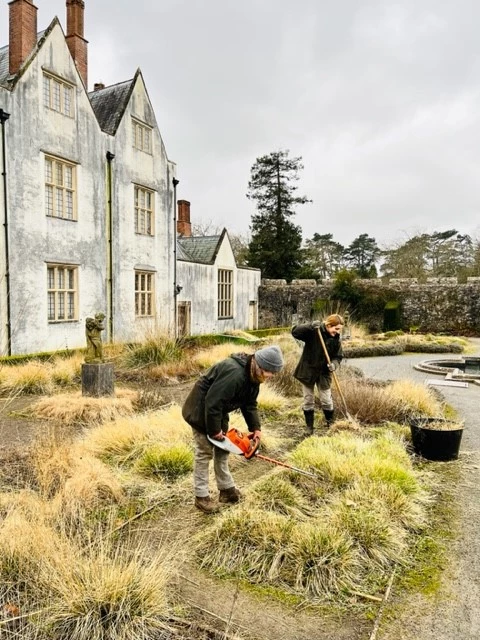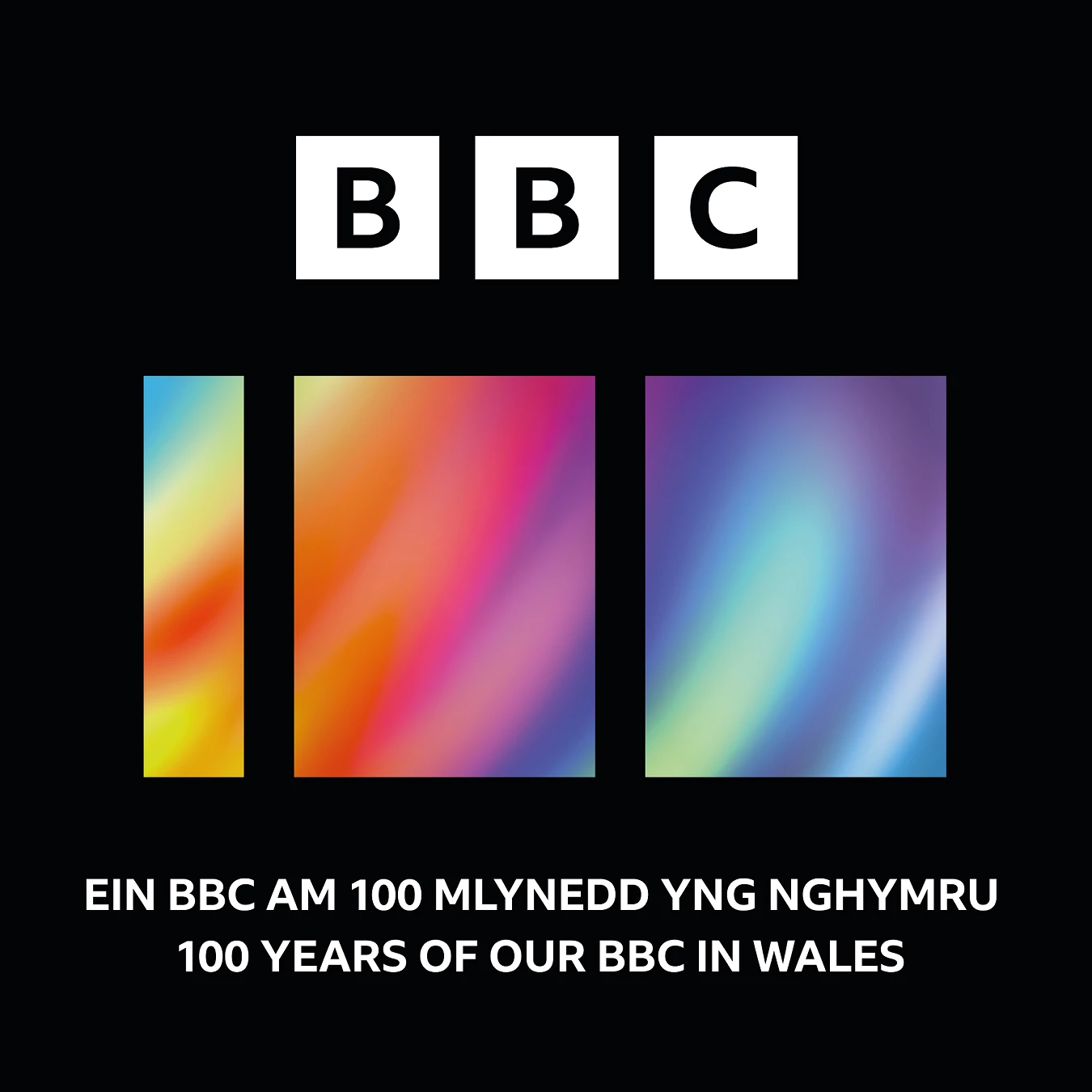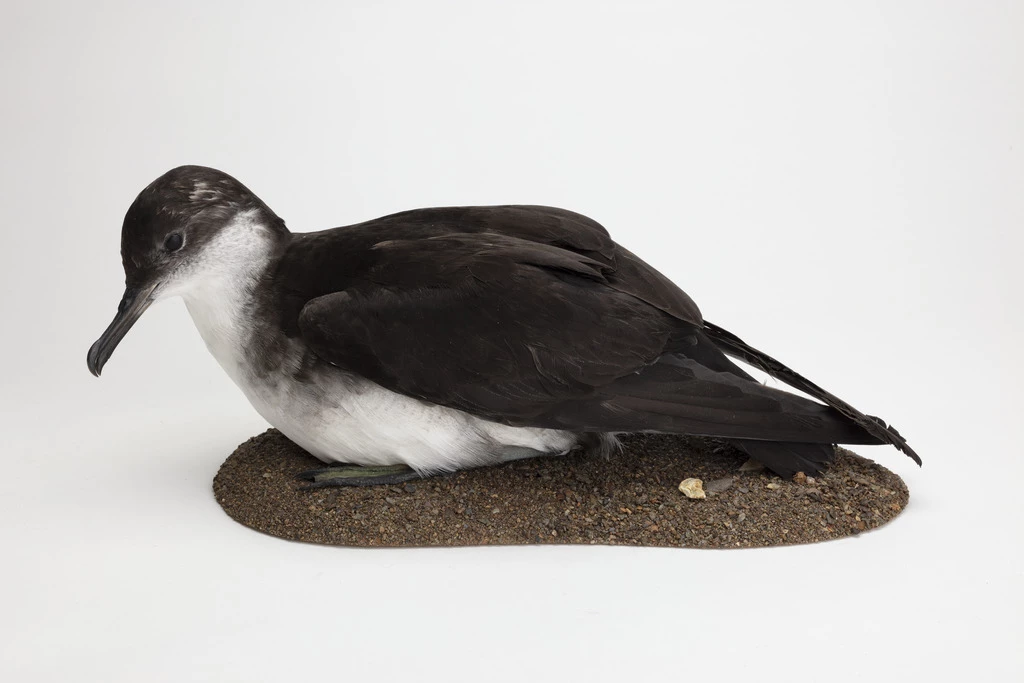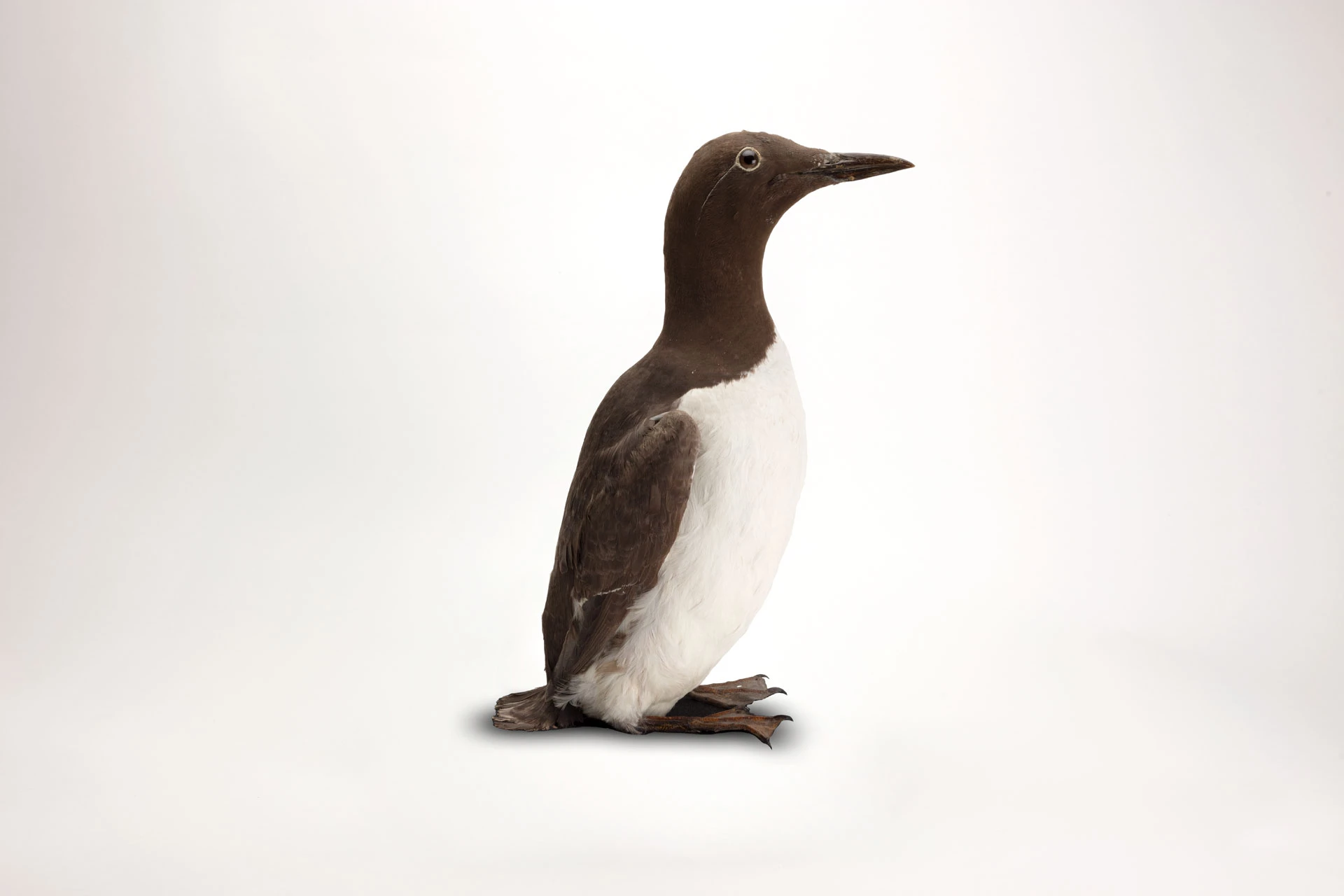Ŵyna ym mywyd ac economi cefn gwlad Cymru a’i theuluoedd ffermio
, 24 Mawrth 2023
Mae teuluoedd ffermio yng Nghymru sy’n cadw defaid yn bennaf yn dibynnu ar ŵyna am eu prif incwm am y flwyddyn. Mae tymor ŵyna llwyddiannus yn hanfodol ar gyfer eu bywoliaeth fel ffermwyr. Bydd cyfran fawr o incwm y fferm yn dod o werthu’r ŵyn ar gyfer cig. Mae’n gyfnod o ddod â bywyd newydd i’r fferm, o ofalu am yr ŵyn newydd-anedig a’u meithrin, o weithio oriau hir, dan amodau anodd weithiau, i gynhyrchu incwm ar gyfer y teuluoedd ffermio.
Mae’r fferm deuluol yn dal i fod yn bwysig iawn yn economi wledig Cymru. Mae llawer o ffermydd wedi cynnal cenedlaethau o’r un teuluoedd ac wedi bod yn rhan hanfodol o economi a bywyd gwledig Cymru drwy gynhyrchu bwyd, gwaith, a chefnogi diwydiannau a chrefftau gwledig cysylltiedig ar gyfer offer, cyflenwadau a pheiriannau.
Mae ŵyna a’r cynhaeaf, y cyfnodau prysuraf ar y fferm, yn dal i gynnwys holl aelodau’r teuluoedd ffermio’n aml. Mae pawb yn rhan o’r gwaith o ofalu am y praidd, yn geni’r ŵyn, yn gofalu amdanynt a’u magu, ynghyd â’r tasgau hanfodol o’u bwydo a rhoi dŵr iddynt, yn carthu llociau, yn rhoi unrhyw driniaeth sydd ei hangen, a mynd â’r mamogiaid a’r ŵyn allan i’r caeau pan fyddant yn ddigon cryf. Bellach mae’n gyffredin i bartneriaid gael swydd yn rhywle arall gydag incwm heblaw ffermio. Ond yn aml maen nhw’n dal i weithio ar y fferm hefyd. Mae ŵyna yn waith pedair awr ar hugain y dydd. Ni ellir rhagweld pa amser o’r dydd na’r nos y bydd dafad yn dod ag oen yn ystod y cyfnod ŵyna.
Mae sgiliau a gwybodaeth hwsmonaeth draddodiadol, wedi’u trosglwyddo i lawr dros genedlaethau, yn cael eu cyfuno â gwybodaeth am faethiad a thriniaethau iechyd anifeiliaid modern. Ar yr un llaw mae’r boddhad, y pleser a’r rhyddhad o weld bywyd newydd yn cyrraedd ac yn ffynnu; ar y llaw arall mae’r blinder o weithio oriau hir a shifftiau nos, gweithio mewn budreddi a mwd, neu mewn amodau oer a gwlyb y tu allan. Mae yna siomedigaethau a rhwystredigaethau wrth golli ŵyn, a fydd yn effeithio’n uniongyrchol ar incwm a phroffidioldeb. Mae’r tasgau rheolaidd ac ailadroddus o garthu llociau, chwistrellu diheintydd, a rhoi gwellt newydd ar lawr yn hanfodol i atal clefydau fel E-coli ymysg yr ŵyn newydd-anedig bregus.
Mae ŵyna yn yr oes fodern yn fwy tebygol o ddigwydd o dan do mewn siediau mawr, yn hytrach nag allan yn y caeau fel yr arferai ddigwydd. Gall ŵyna ddigwydd fesul swp, yn ôl pryd y cafodd yr hyrddod eu rhoi gyda grwpiau o famogiaid, i wasgaru’r gwaith a lleihau’r prysurdeb. Bydd sganio mamogiaid ymlaen llaw yn dangos pa rai sy’n feichiog a sawl oen sydd ganddynt, fel y gellir eu grwpio a rhoi’r sylw a’r gofal angenrheidiol iddynt. Byddai mamogiaid nad ydynt yn feichiog yn cael eu cadw ar y caeau. Gall amseru ŵyna yng Nghymru gael ei ddylanwadu gan leoliad, uchder y tir a thywydd, neu a yw’r ffermwr yn anelu i werthu ar adeg benodol neu ar gyfer galw penodol.
Mae bridiau Cymreig fel y ddafad fynydd Gymreig a’r Beulah yn parhau i fod yn boblogaidd ar y bryniau a’r mynyddoedd. Mae’r ymgyrch i gael ŵyn o ansawdd gwell sydd at ddant defnyddwyr yma ym Mhrydain a’r marchnadoedd allforio yn Ewrop, y Dwyrain Canol ac Asia wedi cynnwys defnyddio bridiau tramor fel defaid Texel, a ddaw o’r Iseldiroedd yn wreiddiol. Mae’n rhaid i fridiau ar ffermydd yr ucheldir a ffermydd mynydd fod yn wydn a gallu gwrthsefyll amodau oer a gwlyb. Nid yw rhai bridiau newydd wedi ffynnu, am eu bod yn agored i gyflyrau fel clwy’r traed gan nad ydynt yn gallu ymdopi’n dda â hinsawdd laith.
Mae ŵyna, fel pob agwedd ar amaethyddiaeth fodern, wedi esblygu’n sylweddol yn seiliedig ar y defnydd o wyddoniaeth a thechnoleg. Mae’r corff ar gyfer hybu gwerthiant cig oen o Gymru – Hybu Cig Cymru, yn disgrifio’r dull cyfoes: ‘Fel un o gynhyrchwyr cig oen mwya’r byd, mae Cymru wedi bod ar flaen y gad o ran datblygiadau yn y diwydiant defaid. Wrth i chwaeth cwsmeriaid newid, felly hefyd mae amaeth wedi newid. Mae ffermio wedi esblygu trwy gyfuno dulliau traddodiadol sydd yn gweddu â’r amgylchedd naturiol godidog ac wedi ei drosglwyddo o genhedlaeth i genhedlaeth, a datblygiadau newydd sy’n gwneud y mwyaf o arferion gorau o ran maeth ac iechyd anifeiliaid.’
Nod triniaethau iechyd anifeiliaid a maethiad yw sicrhau’r gwerth gorau i’r carcas, ac mae dulliau newydd yn seiliedig ar ganlyniadau ymchwil a datblygu. Un dull yw rhoi sbwng i mewn i famogiaid (‘sponging’), gan ddefnyddio progestogen, fersiwn synthetig o’r hormon naturiol progesteron. Gellir dod â phreiddiau i’w tymor yn gynt ac ar yr un pryd, gan ŵyna yn ystod cyfnod penodol iawn o amser, ac yn gynharach yn y flwyddyn. Gellir cynllunio gweithwyr ac adnoddau’n well, a chynhyrchu ŵyn pan fydd yna lai o ŵyn newydd yn barod i’r farchnad o bosibl. Gall hefyd olygu cyfnod byr a dwys iawn, yn enwedig os oes efeilliaid a thripledi angen mwy o amser a sylw, neu famogiaid â chymhlethdodau.
Cyfanswm gwerth allforion cig oen Cymru yn 2022 oedd £171.5 miliwn, cynnydd o £154.7 miliwn yn 2013.
Aeth nifer y defaid yng Nghymru dros 10 miliwn yn 2017 am y tro cyntaf yn yr unfed ganrif ar hugain. Roedd niferoedd defaid wedi gostwng cyn hynny o tua 12 miliwn ar ôl i’r llywodraeth roi’r gorau i daliadau i gefnogi amaethyddiaeth yn seiliedig ar nifer yr anifeiliaid roedd ffermwyr yn eu cadw.
Gallai sawl ffactor ddylanwadu ar ŵyna yn y dyfodol yng Nghymru: nifer y defaid; dymuniadau defnyddwyr; cynaliadwyedd; a newid yn yr hinsawdd. Gallai cytundebau masnach newydd gynnig posibiliadau newydd ond mwy o gystadleuaeth gan fewnforion rhatach hefyd. Ailgychwynnodd allforion cig oen Cymru i’r Unol Daleithiau o’r diwedd yn 2022, a chredir bod potensial i allforio mwy i wledydd fel y Gwlff a Tsieina. Bydd newidiadau i daliadau’r llywodraeth yng Nghymru i’r Cynllun Ffermio Cynaliadwy yn seiliedig ar fanteision amgylcheddol ac adfer bioamrywiaeth, fel rhan o ddiwydiant amaethyddol cynaliadwy. Efallai ei fod yn dal i fod yn ffordd o fyw i raddau, gyda dulliau busnes proffesiynol, yn addasu i ymateb i natur marchnadoedd, gydag entrepreneuriaeth i greu cynhyrchion newydd ar gyfer diwydiant cynaliadwy a fforddiadwy.
Bydd y rhan fwyaf o’r ŵyn yn cael eu gwerthu am eu cig rhwng 4 a 12 mis oed. Yn Sain Ffagan, bydd y rhan fwyaf o’r ŵyn benyw’n cael eu gwerthu neu eu cadw fel stoc magu pedigri. Bydd y rhan fwyaf o’r ŵyn gwryw yn cael eu gwerthu am eu cig gydag ychydig o’r goreuon yn cael eu gwerthu fel hyrddod magu.
Yn 2020, enillodd cig oen Cymru statws Dynodiad Daearyddol Gwarchodedig (PGI) gan Adran Bwyd, Materion Gwledig ac Amaethyddiaeth (DEFRA) Llywodraeth y DU. Statws a ddyfernir gan Lywodraeth y DU yw Dynodiad Daearyddol Gwarchodedig (PGI) sy’n diogelu a hyrwyddo cynhyrchion bwyd rhanbarthol a enwyd sydd ag enw da neu nodweddion nodedig yn benodol i’r ardal honno. Mae’n golygu mai dim ond ŵyn sydd wedi’u geni a’u magu yng Nghymru a’u lladd mewn lladd-dai cymeradwy y gellir eu disgrifio’n gyfreithiol fel Cig Oen Cymru. Roedd hyn yn disodli’r statws PGI blaenorol a ddyfarnwyd gan yr UE yn 2003.
Mewn gwlad fynyddig sy’n anaddas i lawer o fathau o amaethyddiaeth ond ble mae’r arfer o gadw defaid yn ffynnu, bydd y tymor ŵyna blynyddol yn rhan bwysig ohoni bob amser, yn cyflwyno bywyd newydd, yn darparu busnes ffermio hyfyw, ac yn cynnal ffermydd teuluol.

